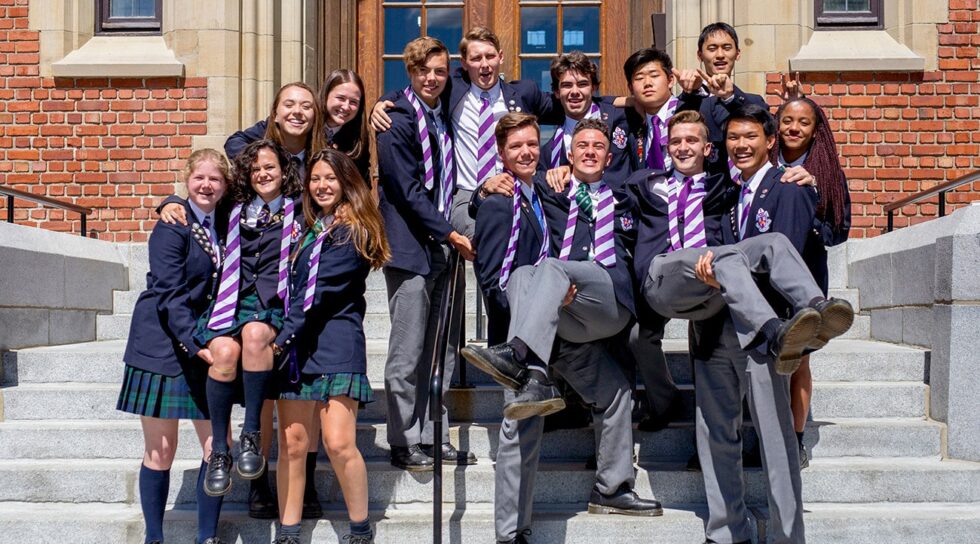
Private schools have reduced their fees and increased bursaries after Labour removed their tax breaks, as data shows pupil numbers have dropped by 13,000 in a year, well above government estimates.
The Independent Schools Council has published its annual census, its first since ministers began charging VAT on fees and making private schools pay business rates.
Mark Taylor, interim chair of the ISC, said it showed the “triple whammy” on independent school finances, the third being the rise in national insurance employer contributions.
“This series of political decisions is unprecedented,” he said, stressing the importance of data to ensure “black and white” evidence of their repercussions.
A negative impact of tax raids on private schools has been widely feared by the sector, with national headlines warning of a major “private school exodus”.
The education secretary, meanwhile, this week told Times Radio private schools had “cried wolf”.
Bridget Phillipson accused them of “whack[ing] up their fees year on year, way beyond inflation” and said it was for them to “justify their decision-making around the level of fee that they set”.
According to the Institute for Fiscal Studies, private school fees rose by 24 per cent in real-terms between 2010 and 2020.
1. Pupil numbers plunge more than expected …
At 1,380 ISC members that participated in both the 2024 and 2025 censuses, pupil numbers dropped by 2.4 per cent, or around 13,000.
The government had estimated there would be around 3,000 more pupils in the state sector as a result of the introduction of VAT, with another 300 expected because of business rates.
However, the decrease from 551,578 to 538,214 takes numbers closer to the population seen in 2022 – 544,000, though the drop is more than double the 5,000 decrease seen after the pandemic hit
2. … but what is falling roll impact?
Part of the decrease could however be due to falling pupil rolls.
Primary school pupil numbers have been falling nationally since 2018-19, while secondary school pupil numbers are forecast to keep growing until 2027-28, due to a population bulge moving through the school system.
Across state primary schools in the England, Scotland and Wales, pupil numbers fell by 0.8 per cent between 2022-23 and 2023-24, while secondary school pupil numbers increased by 1 per cent.
The ISC data shows private school pupil numbers fell across both primary and secondary in the last year, but the drop was more significant in primary school.
The standard intake years for primary and secondary – Reception and Year 7 – both showed reductions of 5.1 per cent. But four of the five largest percentage decreases happened in the primary years, between Reception and Year 3.
The ISC report said: “There has been a recent decline in the UK population in this age range, but that does not explain the whole decrease”.
3. Schools reduce fees after VAT hike
This year, all private schools were required to add 20 per cent VAT onto their fees from January 1.
ISC data shows that the average fee rise in September 2024, before the VAT change hit, was 6.7 per cent.
However, when the January VAT change came in, schools then reduced their fees on average by 5 per cent.
This means that “on average, schools passed on in effect 14 per cent VAT to parents”, the ISC said.
Looking solely at day fees – and excluding SEND schools where fees can differ depending on a child’s needs – two-thirds (69 per cent) of ISC schools reduced their fees in January.
More than one in 10 schools (88 schools, or 10.2 per cent overall) reduced their fees by between 10 and 20 per cent – with another 0.6 per cent of schools (five schools in total) reduced their fees by more than 20 per cent.
The majority of schools lowered their feed by up to 10 per cent. Around one-third did not change their fees.
Meanwhile a very small number (1.3 per cent) increased fees.
Across all schools that completed the census in January 2024 and 2025 – again discounting special needs schools and nursery fees – this marks an overall average fee increase of 1.4 per cent, excluding VAT.
4. Despite concerns, private school bursaries rise
Despite national reports that private schools would no longer be able to afford bursaries because of the VAT raid, many have actually increased the amount of help they give pupils with fees.
The ISC census shows 34.5 per cent of all independent school pupils (more than 183,000) currently receive help with their fees. This equates to more than £1.5bn – an increase of 11.4 per cent on last year’s support.
A “significant majority” (73 per cent) of this comes directly from the schools. ISC schools provide fee assistance worth more than £1.1bn annually – an increase of £3.9 per cent compared to last year.
Other support comes from sources such as local authorities and the government.
The ISC data shows fee assistance has been generally increasing since 2000.
In 2024-25, 39,090 pupils received means-tested bursaries and scholarships. Of these, 13,260 covered 76 per cent to 100 per cent of fees.
In 2023-24, 41,492 pupils received such support. But slightly fewer received higher-level support. That year, 13,042 received 76 to 100 per cent scholarships and bursaries.
Taylor said this shows that “even under the most acute pressure, schools have maintained their commitment to educate the widest possible range of children”.
“Last year, a record amount was spent helping families to afford the fees. This year, that record has already been broken: overall fee assistance has increased by 11 per cent.”.





